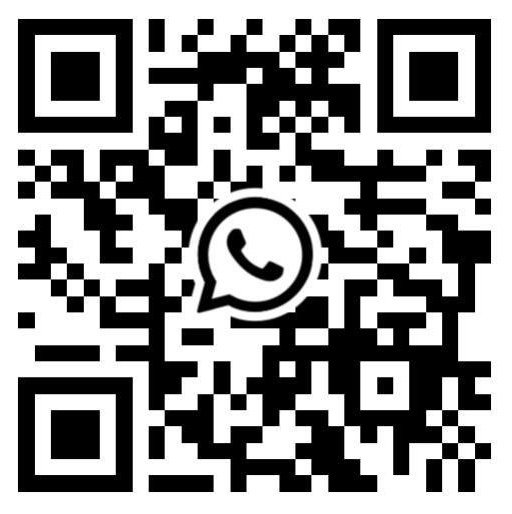Setting personal goals is one of the most powerful ways to create positive change in your life. But while many people know the importance of goal-setting, the real challenge lies in finding methods that actually work for you. The way you set and pursue your goals can make all the difference between success and frustration.
Related: How to Create a Balanced Life and Avoid Overwhelm
Personal Development Coaching can offer unique tools and perspectives that fit your individual needs, helping you break down personal goals in a way that feels motivating and achievable. The right strategies can shift how you approach your aspirations, giving you practical steps to move forward. Below, we explore 35 unique and effective methods that can help you not only set your goals but also achieve them in a way that aligns with your brain’s natural strengths and challenges.
32 Unique Ways to Set and Achieve Personal Goals
You can pick whichever works for you, we are all different. Some ideas to try:
- Body Doubling: Working alongside another person, even remotely, can boost focus and accountability by mimicking a shared workspace.
- Task Layering/Breaking Down: Break down large personal goals into several layers, focusing on one manageable layer at a time instead of the whole task at once.
- Hyperfixation Scheduling: Leverage periods of intense focus by scheduling important tasks during these natural bursts of energy.
- 10-Minute Rule (or 5-Minute Rule if you still struggle to start): Commit to working on a task for just 5 or 10 minutes. This small time frame can help overcome procrastination and inertia.
- External Brain: Offload your thoughts, ideas, and to-do lists into a notebook or app to avoid mental clutter and stay organized. I personally like Notion, among others and can help you create your external brain in a way that works for you.
- Goal Anchoring: Attach your personal goals to daily routines, like listening to a podcast related to your goals while driving to work.
- Daily Dopamine Hits: Incorporate small rewards or enjoyable activities into your routine when you accomplish a task.
- Multi-Sensory Planning: Engage all your senses when mapping out personal goals—use visual, tactile, or auditory aids to enhance memory retention.
- Personal Rituals: Build daily or weekly rituals around goal-setting, like reviewing progress with a morning coffee to make it an automatic habit.
- Switching Contexts: When stuck, switch to a different task, location, or medium to reset your brain and regain focus.
- Anti-Task Lists: Write down tasks you should avoid to prevent distractions (e.g., staying off social media until the task is done).
- Reverse Planning: Start by envisioning your personal goal’s end result and then plan backward to identify all the necessary steps.
- Gamify Your Goals: Turn your personal goals into a game by setting up points, levels, or challenges to make the process fun and engaging.
- Environmental Triggers: Modify your environment with visual cues (such as post-it notes or color-coded charts) that keep your goals top of mind.
- Mind Mapping: Use mind maps to visually organize your personal goals, making it easier to see how smaller tasks connect to the larger outcome.
- Time Blocking with Buffer Zones: Schedule specific blocks of time for goal-oriented work but include buffer zones to accommodate unexpected distractions.
- Pretend To Be Someone Else: If you are struggling to do certain tasks, you could pretend you are someone you know who is able to do it more easily and mimic them.
- Visual Progress Charts: Keep a visible chart of your progress in a frequently visited spot, like your fridge or workspace, to keep motivation high. Or on your to do list have a completed area, where you can see all the things you HAVE achieved, not just the tasks still awaiting you.
- Task Swapping: When you feel stuck on a particular task, swap it out for another task on your list to maintain flow and energy.
- Create Mood Playlists: Curate playlists that match the energy level needed for different stages of your goal-setting process, whether you need focus or motivation.
- Low Energy Goals: Keep a list of smaller, less mentally demanding tasks for days when your energy or motivation is lower.
- Chunk Time, Not Tasks: Rather than fixating on completing a task, commit to working on it for a set amount of time, such as 10, 20 or 30 minutes.
- Body-Based Feedback: Tune into your body’s signals—like tension or restlessness—to know when it’s time for a break or a task switch.
- Personal Theme of the Month: Dedicate each month to a theme that supports your overall personal goals, so each month has a main focus (with the others still important but less of a priority). This can increase focus and reduce distractions.
- Sensory Breaks: Incorporate sensory tools like stress balls, fidget toys, nice smells etc into your workflow to give you some calm.
- Spaced Repetition Goals / The 2, 3, 5, 7 Rule: Revisit and reinforce your goals at increasing intervals. The 2, 3, 5, 7 revision rule is where you review initial notes on day one, take a second look on day two and day three, then revisit them on day five and day seven. Each time you revise your notes or personal goals, refine and get confident you know what they involve so it stays in your mind and you make progress.
- Task Playbooks: Create step-by-step templates or “playbooks” for repeated tasks so you can follow the process more easily next time.
- Progress Through Hobbies: Integrate your goals into hobbies, like learning about a subject through crafting, gaming, or another enjoyable activity.
- Work in Sprints: Use short bursts of focused work followed by intentional rest (such as Pomodoro Technique) to prevent exhaustion.
- Flipping Failure: Turn setbacks into growth opportunities by documenting what went wrong and what adjustments you can make for the future.
- Goal Trading: Here’s an unconventional one. Swap personal goals with a friend for a day, offering new perspectives and strategies on each other’s tasks.
- Externalising Accountability: Partner with someone, use commitment devices like certain apps or hire a coach to keep you accountable by regularly sharing your progress. This can create external accountability for achieving personal goals.
Speak to me for more ideas! -> What I Offer
How Personal Development Coaching Can Help
For those struggling to implement or maintain these strategies, working with a Personal Development Coach can make all the difference. A Personal Development Coach doesn’t just offer advice or strategies; they provide tailored solutions based on an individual’s strengths and lifestyle. Whether it’s maintaining focus, overcoming procrastination, or building resilience, a coach can help clients leverage the right tools for lasting change.
Related: 5 Techniques to Manage Overwhelm and Stress
By guiding clients to recognize and work with their unique brain wiring, a Personal Development Coach fosters a sense of empowerment. This process is especially beneficial for neurodivergent individuals who may feel that traditional goal-setting methods may not have worked for them in the past.
Conclusion
Setting and achieving personal goals doesn’t have to be a linear, one-size-fits-all approach. By embracing creative and flexible strategies, individuals can discover the methods that resonate with their strengths and preferences. Personal Development Coaching offers support, accountability, and a personalized approach to making lasting change in your life. So, whether you’re neurodivergent or just seeking new ways to approach and achieve your goals, consider the power of unique strategies and the guidance of a Personal Development Coach to unlock your full potential.
FAQs
How do I know when it’s time to adjust my personal goals?
It’s normal to need to adjust your goals as you progress. If you find yourself consistently feeling stuck or overwhelmed, it might be a sign to reassess your approach. Regularly reviewing your goals and asking yourself if they still align with your values or if external circumstances have changed can help determine when adjustments are necessary.
How do I stay on track when life circumstances change?
Life events are inevitable, but staying adaptable is key. If your circumstances change, reassess your goals and adjust your timeline or steps accordingly. Sometimes this means temporarily shifting focus or breaking larger goals into more manageable tasks that align with your new priorities.
How do I manage conflicting goals or desires?
Conflicting goals can occur when you want to pursue multiple objectives that require different types of time, energy, or resources. A good approach is to assess which goals will provide the greatest return on investment and adjust timelines so that one goal can take precedence over others for a set period.
How can I set long-term goals while managing daily tasks?
Long-term goals require patience, but you can balance them with daily tasks by breaking the long-term goal into smaller chunks. Dedicate a portion of your day or week to tasks that contribute to the larger goal, ensuring you’re making progress without overwhelming yourself with the long-term picture.
How can I stay motivated when I’m not seeing immediate progress?
Lack of immediate progress can be discouraging, but it’s important to celebrate small wins. Break larger goals into smaller milestones and focus on completing those. Tracking incremental progress through visual charts or journaling can also keep motivation high, showing that you’re making strides even when it doesn’t feel like it.


